
Frederik Christian Vilhelm Christesen (4 July 1822 - 29 December 1899) was a Danish goldsmith and silversmith. His firm was from 1858 based at Amaliegade 11 in Copenhagen.

Frederik Christian Vilhelm Christesen (4 July 1822 - 29 December 1899) was a Danish goldsmith and silversmith. His firm was from 1858 based at Amaliegade 11 in Copenhagen.
Christesen was born on 4 July 1822 in Copenhagen, the son of helmsman Anders (or Hans) Christensen (1792-1828) and Vilhelmine Magdalene Augusta Grandjean (1796-1849). The mother moved the family to Slagelse following the father's death in 1825. [1] Christesen was apprenticed to Jacob Kjølstrup in his new home town. On completing his apprenticeship in 1843, he travelled to Bremen as a journeyman to work for Wilkens & Salme. [2]
In 1846, he returned to Slagelse and took over his old master's workshop. In 1856, he moved to Copenhagen where he was initially based at Løvstræde 122 (old number). In 1857, he obtained a license to start a silver and gold pressing factory. It was the first enterprise of its kind in the country and soon grew to considerable size. [2] In 1858, he moved his enterprise to a building in the courtyard of Amaliegade 11. His products were initially sold through other gold smiths but in 1865 he opened his own shop. His business was mainly based on industrial mass production but his involvement in Kunstflidslotteriet (founded 1861) and the associated artists resulted in a number of precious show pieces for which he received recognition on a number of exhibitions in Denmark and abroad. [1]

Christesen was on 28 June 1846 in Bremen married to Luise Sophie Dorothea Pape (25 August 1825 - 10 August 1882). She was a daughter of mailman and former distiller Hermann Pape (1790-1838) and Dorothea Margarethe Plöger (1799-1865). [1]
In 1874, Christesen purchased Amaliegade 11. He heightened the building facing the street to four storeys and constructed a short perpendicular side wing on its rear. He lived with his family in the apartment on the first floor. [3] He died on 29 December 1899 and is buried in the Cemetery of Holmen. [1]
Christesen's factory was internationally renowned for its 'Ancient Norse' style jewellery, copying archeological objects from the Bronze Age to the medieval period. The company's work was popular in England where it was copied by læcal goldsmiths. [4]

Princess Thyra of Denmark, Danish pronunciation: [ˈtsʰyːʁɑ], was the youngest daughter and fifth child of Christian IX of Denmark and Louise of Hesse-Kassel. In 1878, she married Ernest Augustus, the exiled heir to the Kingdom of Hanover. As the Kingdom of Hanover had been annexed by Prussia in 1866, she spent most of her life in exile with her husband in Austria.
Vilhelm Lauritzen was a leading Danish modern architect, founder of the still active architectural firm Vilhelm Lauritzen Arkitekter.

Herman Wilhelm Bissen was a Danish sculptor.

Johan Daniel Herholdt was a Danish architect, professor and royal building inspector. He worked in the Historicist style and had a significant influence on Danish architecture during the second half of the 19th and the beginning of the 20th century. His most famous work is the Copenhagen University Library in Fiolstræde in Copenhagen which heralded a new trend. The strong use of red brick in large-scale cultural and civic buildings was to characterize Danish architecture for several decades. He was a leading proponent of the "national" school in Danish architecture of the period as opposed to Ferdinand Meldahl's and Vilhelm Dahlerup's "European" school.

Jørgen Hansen Koch was a Neoclassical Danish architect. He was chief of the national Danish building administration from 1835 and director of the Royal Danish Academy of Fine Arts from 1844 to 1849.
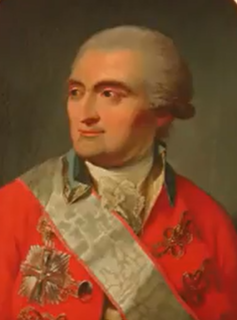
Johan Frederik Classen, frequently also J. F. Classen, was a Danish-Norwegian industrialist, major general, landowner and founder of Det Classenske Fideicommis. He served as chancellery adviser to King Frederik V. Classen built the manor house Arresødal in 1773, he renovated the Neoclassical manor house Corselitze in 1777, and built the General's Summerhouse by the Corselitze Forest.

Peter Hersleb Classen, frequently also P. H. Classen, was a Norwegian-Danish statesman and director of Det Classenske Fideicommis.

Amaliegade 14 is a Rococo-style building in the Frederiksstaden neighbourhood of central Copenhagen, Denmark. It was listed on the Danish registry of protected buildings and places in 1918.
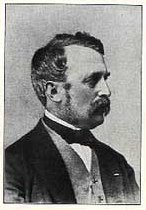
Harald Conrad Stilling was a Danish architect who was active in Copenhagen during the Late Classical period of the mid-18th century. He received the C. F. Hansen Medal in 1841.

The Niels Aagesen House is a property at Amaliegade 22 in the Frederiksstaden district of central Copenhagen, Denmark.
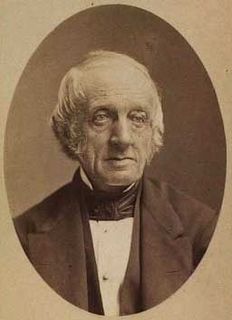
Christian Rønnenkamp was a Danish businessman, landowner and philanthropist. He constructed the listed property at Amaliegade 4 in Copenhagen and owned the estates of Næsbyholm and Bavelse from 1835.

Amaliegade 15–17 are two originally symmetrical, Rococo-style townhouses located close to Amalienborg Palace in the Frederiksstaden district of central Copenhagen, Denmark. The exterior of the buildings was designed by the architect Nicolai Eigtved who had also created the overall masterplan for the neighbourhood. The house at No. 15 was heightened with a half floor in 1891.
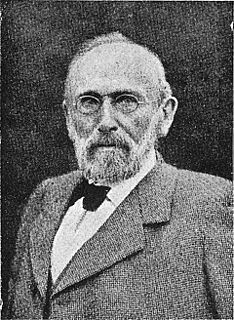
Gustav Adolph Hagemann was a Danish engineer and businessman. He was chief technical officer of the Danish Sugar Factories from 1872 to 1897 and then served as chairman of the board until 1916. He owned several sugar plantations on Saint Croix in the Danish West Indies.

Henning Frederik Bargum was a Danish merchant and slave trader. The Yellow Mansion, his former home at Amaliegade 18 in Copenhagen, is now home to the Lord Chamberlain's Office.

Christian Ditlev Ammentorp Hansen was a Danish pharmacist and industrialist. He founded Christian Hansen's Technical-Chemical Laboratory, which revolutionized the production of wholesome dairy products in the 1870s. He also had a key role in the establishment of the Danish Pharmaceutical College in Copenhagen in 1892, financing its first building in Stockholmsgade out of his own pocket. He owned Mullerup on Funen and Bøstrup at Slagelse.

Ole Jørgen Rawert (Ravert) was a Danish civil servant, industrial historian and illustrator. He is remembered for his vast number of topographical watercoulours from across Denmark.
Falkensteen is a manor house located five kilometres south of Slagelse, Denmark. The current Neoclassical main building was built for Georg Frederik Ditlev Koës in 1775. It was listed on the Danish registry of protected buildings and places in 1950. A half-timbered barn from 1864 is also listed.
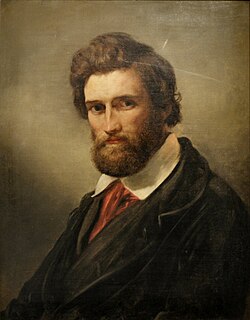
Harald Conradsen was a Danish sculptor and medallist. He was chief medallist at the Royal Mint from 1873 to 1901. Other works by Conradsen include the Royal Danish Academy of Fine Arts' Eckersberg Medal and the University of Copenhagen's gold medal.

Amaliegade 11 is a former 18th century town house in the Frederiksstaden neighborhood of central Copenhagen, Denmark. The house was originally constructed in the mid-1750s with a facade design by Niels Eigtved in accordance with his overall guidelines for buildings in the new district. In the 1870s, it was acquired by silversmith Vilhelm Christesen and heightened to four storeys. On its rear is a succession of three free-standing secondary buildings separated by small courtyards. The building fronting the street and the two first rear wings, both of which are half-timbered, were listed in the Danish registry of protected buildings and places in 1978. Other notable former residents include two later admirals and a foreign minister.
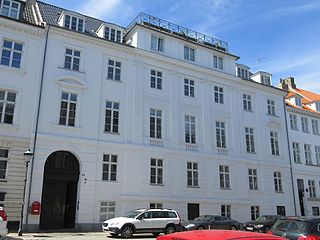
Amaliegade 45 is a Neoclassical property situated at the northern end of Amaliegade in the Frederiksstaden district of central Copenhagen, Denmark. It is part of a row of adjoining buildings constructed at the site by master builder Andreas Hallander in the 1780s but owes it current appearance to an adaption most likely undertaken by Jørgen Henrich Rawert in 1801. The building was from 1817 owned by the painter Martin Rørbye's parents. His first significant painting, View from the Artist's Window, from c. 1825, shows the view from the family's apartment on the second floor. It was listed on the Danish registry of protected buildings and places in 1918.